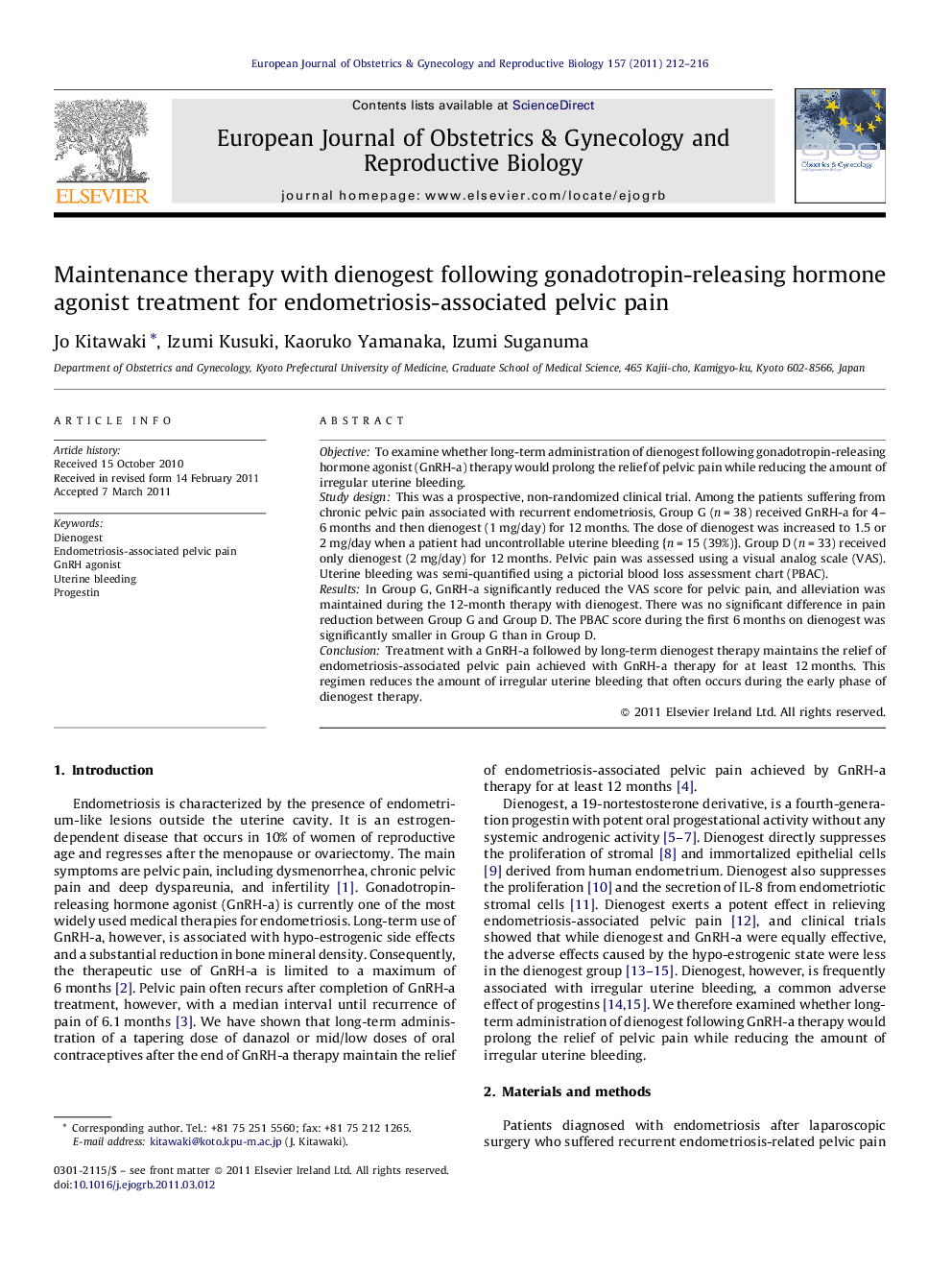| Article ID | Journal | Published Year | Pages | File Type |
|---|---|---|---|---|
| 6174915 | European Journal of Obstetrics & Gynecology and Reproductive Biology | 2011 | 5 Pages |
ObjectiveTo examine whether long-term administration of dienogest following gonadotropin-releasing hormone agonist (GnRH-a) therapy would prolong the relief of pelvic pain while reducing the amount of irregular uterine bleeding.Study designThis was a prospective, non-randomized clinical trial. Among the patients suffering from chronic pelvic pain associated with recurrent endometriosis, Group G (n = 38) received GnRH-a for 4-6 months and then dienogest (1 mg/day) for 12 months. The dose of dienogest was increased to 1.5 or 2 mg/day when a patient had uncontrollable uterine bleeding {n = 15 (39%)}. Group D (n = 33) received only dienogest (2 mg/day) for 12 months. Pelvic pain was assessed using a visual analog scale (VAS). Uterine bleeding was semi-quantified using a pictorial blood loss assessment chart (PBAC).ResultsIn Group G, GnRH-a significantly reduced the VAS score for pelvic pain, and alleviation was maintained during the 12-month therapy with dienogest. There was no significant difference in pain reduction between Group G and Group D. The PBAC score during the first 6 months on dienogest was significantly smaller in Group G than in Group D.ConclusionTreatment with a GnRH-a followed by long-term dienogest therapy maintains the relief of endometriosis-associated pelvic pain achieved with GnRH-a therapy for at least 12 months. This regimen reduces the amount of irregular uterine bleeding that often occurs during the early phase of dienogest therapy.
